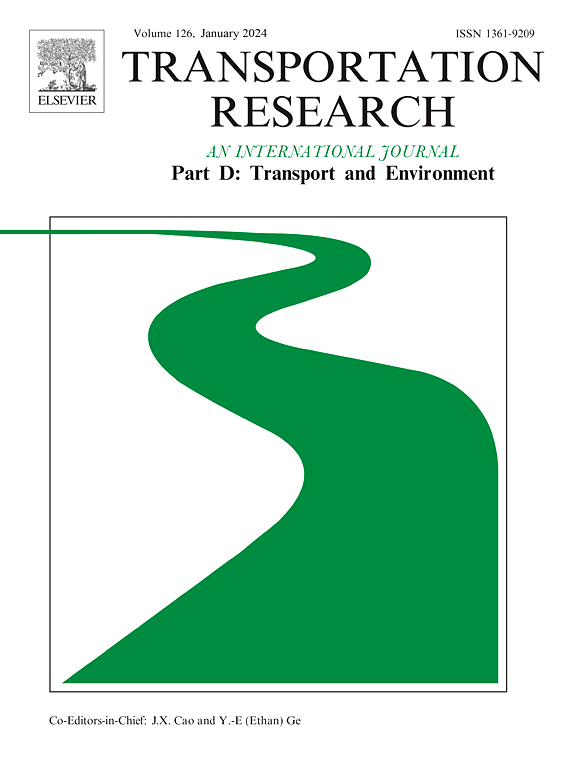跨越城市边界:探索邻里环境对城际通勤者生活满意度的影响
IF 7.3
1区 工程技术
Q1 ENVIRONMENTAL STUDIES
Transportation Research Part D-transport and Environment
Pub Date : 2024-09-25
DOI:10.1016/j.trd.2024.104433
引用次数: 0
摘要
长期以来,人们一直在研究邻里环境与生活满意度之间的关系。然而,很少有研究探讨在不同城市地区居住和工作的城际通勤者之间的关系。本文利用在中国大湾区内收集到的城际通勤者的数据,通过居住、出行和休闲满意度来确定物理和社会环境要素如何影响生活满意度。研究结果表明,居住区的高密度和混合程度与通勤者的日常居住和出行体验呈正相关,而工作场所的高密度则对居住满意度产生负面影响。社会环境对城际通勤者意义重大。生活领域满意度(包括出行、休闲和居住满意度)是邻里环境与生活满意度之间关系的中介。出行和休闲满意度会影响居住满意度,而居住满意度又会影响生活满意度。虽然跨越城市边界旅行是城际通勤者日常行为的一部分,但邻里环境仍然在塑造他们的生活领域方面发挥着重要作用,并进一步促进了整体满意度的提高。本文章由计算机程序翻译,如有差异,请以英文原文为准。
Across the city boundaries: Exploring the impact of neighborhood environment on intercity commuters’ life satisfaction
The relationship between the neighborhood environment and life satisfaction has long been studied. However, few studies have examined the association between intercity commuters who reside and work in different urban areas. This paper identifies how physical and social environmental elements affect life satisfaction through residential, travel, and leisure satisfaction using data collected among intercity commuters within the Great Bay Area in China. The results suggest that high density and mixture level in the neighborhood are positively related to their daily experience with residence and travel, but the higher density in workplace negatively influents residential satisfaction. Social environment is of great significance to intercity commuters. Life domain satisfaction (including travel, leisure, and residential satisfaction) mediates the relationship between the neighborhood environment and life satisfaction. Travel and leisure satisfaction affect residential satisfaction, which in turn affect life satisfaction. Although travelling across city boundaries is part of intercity commuters’ daily practice, neighborhood environment still plays an important role in shaping their life domain, and further contribute to overall satisfaction.
求助全文
通过发布文献求助,成功后即可免费获取论文全文。
去求助
来源期刊
CiteScore
14.40
自引率
9.20%
发文量
314
审稿时长
39 days
期刊介绍:
Transportation Research Part D: Transport and Environment focuses on original research exploring the environmental impacts of transportation, policy responses to these impacts, and their implications for transportation system design, planning, and management. The journal comprehensively covers the interaction between transportation and the environment, ranging from local effects on specific geographical areas to global implications such as natural resource depletion and atmospheric pollution.
We welcome research papers across all transportation modes, including maritime, air, and land transportation, assessing their environmental impacts broadly. Papers addressing both mobile aspects and transportation infrastructure are considered. The journal prioritizes empirical findings and policy responses of regulatory, planning, technical, or fiscal nature. Articles are policy-driven, accessible, and applicable to readers from diverse disciplines, emphasizing relevance and practicality. We encourage interdisciplinary submissions and welcome contributions from economically developing and advanced countries alike, reflecting our international orientation.

 求助内容:
求助内容: 应助结果提醒方式:
应助结果提醒方式:


